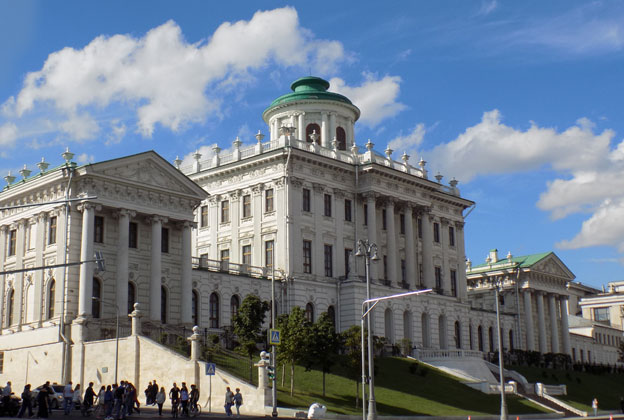An exhibition of documents after D. S. Merezhkovsky and V. F. Khodasevich “Writers of the Silver age: Merezhkovsky and Khodasevich” is held on 17 August – 10 September 2016 in the Rumyantsev hall of the Russian State Library.
It is dedicated to the 130th anniversary since the birth of Vladislav Khodasevich and 150th anniversary of the birth of Dmitry Merezhkovsky, and will enable readers and fans of the writers to touch the objects of their memory, to materialize the feeling of the Silver age in general.
D. S. Merezhkovsky (1865-1941) – philosopher, poet, novelist, historian, literary critic and playwright. An active participant in the politics of the time, who greeted the February revolution and Hitler’s rise to power. Expat. In Soviet times, he was forbidden to publish. The initiator of the establishment of the New Church, the Church of the Holy spirit. The most famous work of Merezhkovsky is the trilogy “Christ and Antichrist”. Poetry style he used is symbolism.
V. F. Khodasevich (1886-1939) – Russian poet, critic, and scholar. Expat. He was close to the literary shop as “acmeists”, but was not included in their number. The Russian revolution he approved at first, but then was disappointed. In Soviet times, he was forbidden for publishing. The author of the memoirs “Necropolis of the poets of the Silver age – V. Bryusov, F. Sologub, N. Gumilyov, A. White, M. Gorky, and so on.
The exhibition presents photographs, inscriptions in books, correspondence and notebooks from the collections of people who knew writers. These funds are Merezhkovsky and Khodasevich to their emigration from Russia.

In front of us there is a fellowship of heroes to the prominent people of that time, highlighting common points in their biographies. For example, both writers took help of Gorky for their departure into exile, both corresponded with the same people and did translations of the Armenian, Polish and other poetry.
On display we can see the autographs of poems, letters. Manuscripts were carefully transcribed by library staff. So, we can look and read both. Mainly there is a correspondence with V. Rozanov, M. Gershenzon and others in the first years after October 1917.
The most valuable monument is correspondence of D. Merezhkovsky with the widow and the guardian of the memory of F. M. Dostoevsky Anna Grigorievna.
The exhibition also reminds that state library keeps the most valuable collections of literary manuscripts, waiting for its readers and researchers.





